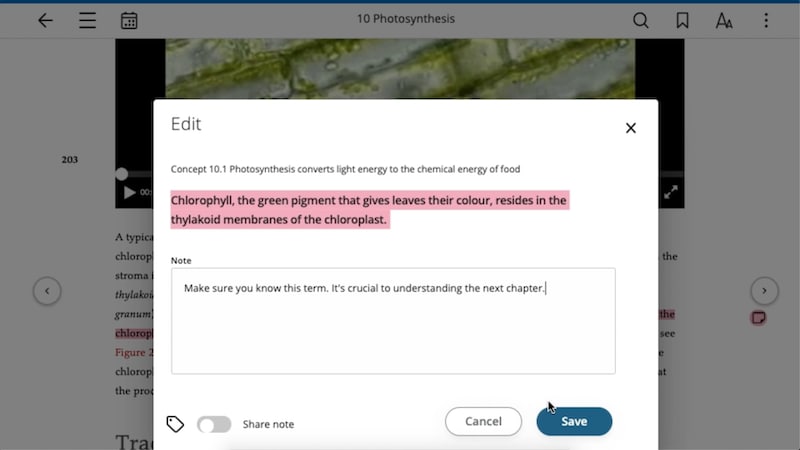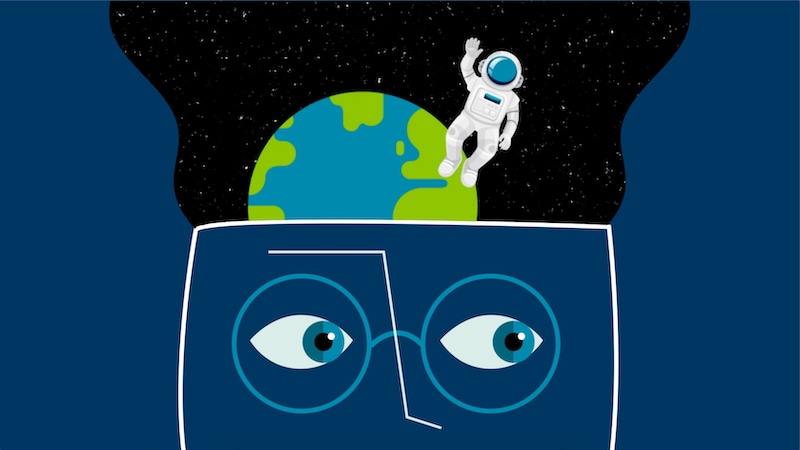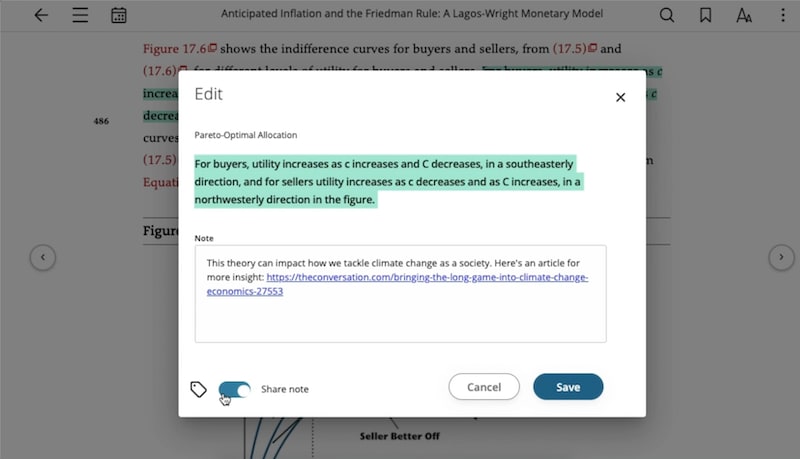How faculty can use etextbooks to encourage students to read

Why don't students do their assigned readings? Many aren’t motivated to read through dense pages of information. eTextbooks have encouraged more students to read because of its interactivity and convenience.
But technology alone doesn't improve learning. Instructors play the most important role in encouraging students to read.
A 2015 Educause study looked at how an instructor’s use of eTexts affects student reading and learning. It found that 70% of students preferred eTexts over paper textbooks because of instructor highlights and annotations. This feature is just as important to them as the eText saving them money.

When instructors actively used the eText with highlights and annotations, students actually read more, highlighted more, and made more notes. In other words, when instructors engage with the eText, so do their students.

This is because instructor highlights model for students how to actively read and extract key information. It also shows students why the reading is important to their learning and success in the course.

An instructor shares a note and highlight directly in the Pearson eText for students to see while reading.
“When instructors actively used the eText with highlights and annotations, students actually read more, highlighted more, and made more notes.”
The study also found that active instructor engagement with eText actually improved learning.

A look into how we learn from reading can explain why.
Dan Belenky, the Director of Learning Science Research at Pearson, explains how we understand what we read:
“Reading is fundamentally this interaction between the things you’re reading and everything else you know and everything else you bring to mind, and the inferences that all that information lets you make and the picture it helps you paint in your own head.
When we read, we’re not just taking information in. It’s not this passive thing where there’s some words on the text, and you have to get it into your head. When we read, we’re using the words and sentences as cues to build this situation model.”
A situation model is the mental picture you create in your head when you read. For example, if you read “There is no gravity in outer space”, this image will probably come to mind.

This requires you knowing that astronauts go to outer space and what gravity does. None of this is written in the text. But it’s background knowledge that you draw from to build this mental understanding of what you’re reading.
“Learning from reading is this co-creation process where you’re getting this information in from the exact words. But the interesting thing is, and the place where all the good stuff is really happening, is in the head, is in your mind as you’re constructing this picture of what the text is describing,” says Dan Belenky.
The more relevant knowledge you have, the more detailed your situation model. And the more detailed your situation model, the deeper your understanding of the text.
This is why annotating the eText with references to local news, analogies, pop culture, or even personal experiences, can be so valuable to learning. By relating abstract concepts to familiar information, students are able to make connections, which in turn improves their comprehension.

An Economics instructor shares a current events article in relation to the text that students can refer to when doing their readings in Pearson eText
“All of those ‘whats’, ‘whys’—all of those kinds of questions—that’s really the heart of learning anything. But in particular, if you think about the risks of leaning from text is that it’s very passive, and you have a bunch of words you’re asked to remember. But that’s not interesting or useful.
What you really need is to try to remember is different ways of engaging with the phenomena you’re learning about,” says Dan Belenky.
By relating abstract concepts to familiar information, students are able to make connections, which in turn improves their comprehension.
With the eText, you have new opportunities to connect with students and guide their learning. When used to its full potential, it can empower you to inspire meaningful engagement with class content.
See how you can bring an interactive eText into your course